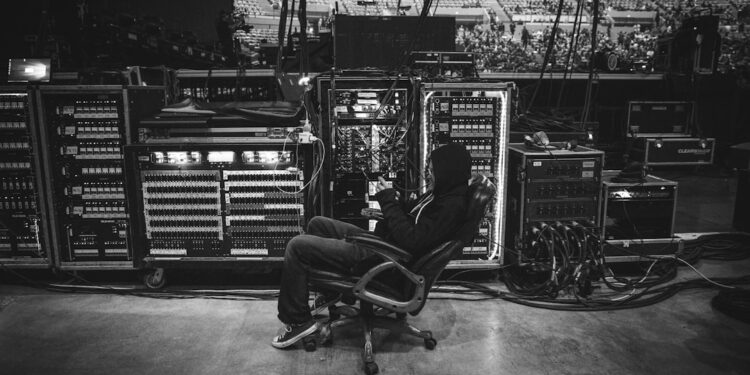The film industry has come a long way since its inception in the late 19th century. One of the key factors that has contributed to the growth and development of the industry is the evolution of production technology. From the early days of silent films to the present day blockbusters, the advancements in production technology have not only transformed the way films are made but also the way they are consumed.
The early days of filmmaking were a far cry from what we see on the big screen today. In the late 19th century, films were shot on bulky cameras that required a lot of manpower to operate. The film stock used was highly flammable and had to be handled with care. Editing was a painstaking process that involved physically cutting and splicing film reels together. Despite these limitations, filmmakers of the time managed to create some of the most iconic films that are still revered today.
One of the biggest advancements in production technology came with the introduction of sound in films. The transition from silent films to ‘talkies’ revolutionized the industry and opened up new possibilities for storytelling. Microphones, sound recording devices, and synchronized soundtracks became essential tools for filmmakers. This technological leap paved the way for the modern film industry as we know it today.
The 1950s and 60s saw the advent of color film technology, which added a new dimension to filmmaking. Directors and cinematographers were able to experiment with vibrant hues and create visually stunning films. The introduction of special effects further enhanced the viewing experience, allowing filmmakers to create fantastical worlds and bring larger-than-life characters to the screen.
The 1970s and 80s brought about the era of blockbuster filmmaking, with big-budget films dominating the box office. Advances in production technology allowed filmmakers to push the boundaries of what was possible on screen. The introduction of computer-generated imagery (CGI) revolutionized the way visual effects were created, giving rise to epic fantasy films and superhero franchises that continue to captivate audiences today.
The digital revolution of the 21st century completely transformed the way films are produced and distributed. The shift from traditional film cameras to digital cameras made filmmaking more accessible and cost-effective. Digital editing software made the post-production process faster and more efficient. The rise of streaming platforms like Netflix and Amazon Prime changed the way films are delivered to audiences, bypassing traditional theatrical releases.
Today, the film industry continues to evolve with the advancement of technology. Virtual reality (VR) and augmented reality (AR) are being used to create immersive experiences for audiences. Artificial intelligence (AI) is being employed to streamline production processes and analyze audience data. The possibilities are endless, and filmmakers are constantly exploring new ways to push the boundaries of storytelling.
As production technology continues to evolve, the film industry faces new challenges and opportunities. The rise of streaming platforms has led to a shift in audience preferences, with more people opting to watch films from the comfort of their homes. This has forced filmmakers to adapt their storytelling techniques to cater to changing viewing habits.
Despite these challenges, the evolution of production technology has democratized filmmaking, allowing independent filmmakers to create high-quality films on a smaller budget. The accessibility of digital cameras and editing software has empowered a new generation of filmmakers to tell their stories in unique and innovative ways.
In conclusion, the evolution of production technology in the film industry has had a profound impact on the way films are made and consumed. From the early days of silent films to the digital age, advancements in technology have transformed the industry and allowed filmmakers to push the boundaries of storytelling. As technology continues to evolve, the future of filmmaking looks brighter than ever, with endless possibilities for creativity and innovation.















